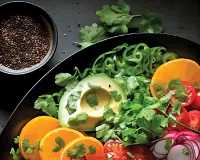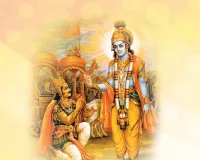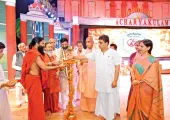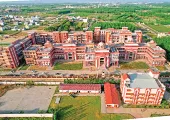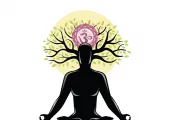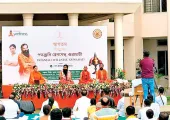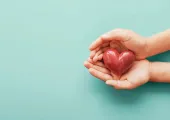Indian Tradition of Treatment
On

Prof Remeshwar
Mishra Pankaj
The medicines mentioned in ayurved have been classified on the basis of herbs, milk, dung, cow dung, cow urinal, etc of animals and various minerals and elements.That’s why, ayurvedic medicines have been termed as aesthetic and blissful for the human being. |
There has been a famous tradition of leading a healthy, aesthetic and prosperous life in India since time immemorial. For this, the importance of four varna and four ashram has been mentioned since long ago. In the modern period, Rishi Dayanand among all the scholars proposed spiritual and cosmic importance of prosperous and aesthetic life. Therefore, the religious scriptures mention the process of total lifestyle. It includes rising in brahma muhurta, completing daily works, going to bed at night, etc. It also mentions defecation in the morning. Because it has been said that ‘shauchacharavihinasya samasta nishphalah kriyah’ it means that if the people fail to defecate properly, all the process will get disturbed. The religious scriptures mention both the outer and internal cleaning. After that, they should do aasan, pranayama, yog, etc. It also includes the process of taking bath and tarpan. Separate lifestyle and work for celibate, grihastha and vanprastha people have been mentioned in detail. Therefore, our ancient scriptures mention total provisions of healthy life.
Daily lifestyle and work are different for Celibate, grihastha, vanprastha and sanyasi. Apart from proper daily lifestyle and work, our religious scriptures mention treatment of various diseases arising out of other causes. Indians have been well aware of diversity of lifestyle and treatment due to infiniteness and diversity of knowledge since time immemorial. Therefore, it has been said that ayurved is infinite because treatment processes can be uncountable. Time period from anybody’s birth to death is called age and alchemy through which the people can remain healthy is known as ayurved.
The medicines mentioned in ayurved have been classified on the basis of herbs, milk, ghee, dung, urinal, etc received from animals and various mineral elements, etc. Due to this fundamental basis, ayurvedic medicines are considered as precious and beneficial for the human being. Therefore, Indian treatment system not only provides treatment of diseases and diagnosis but also portrays the entire disorder of the body and the mind. The ved also mentions the important organs of the human body. Various organs like brain, skull, head, tongue, forehead, nose, eyes, ears, cheek, chin, cervix, teeth, abdomen, intestine, spleen, flank, pulse, heart, skin, blood, flesh, bone marrow, fat, hand, leg, navel, thigh, bone, mammary gland, vessels, shoulder, back, fingers, pelvic, reproduction organs, etc have been mentioned in detail in the Atharvaved. Animal bones have also been mentioned in it. The human body is made of seven elements like blood, flesh, fat, bone, bone marrow, shukra and juice which have also been mentioned in ayurved in detail. The human being eats food which builds rasdhatu. Later, it forms blood, flesh, fat, bone, bone marrow and shukra. Aura is the very basis of all these processes. It plays an important role in the human body. It’s known as the strength of human being.
In fact, ayurved is the upaved of the Atharvaved. Therefore, it has also been said as panchamved. Brahma himself is the proponent of ayurved. There has been a great tradition of its acharya. Internal medicine and surgery are different parts of the treatment system. Generally, internal medicine is linked with rishi and it is called aatreya tradition. Similarly, surgery is famous in the tradition of Lord Dhanvantari. Charak Sanhita and Sushrut Sanhit are our ancient ayurved tradition. Sushrut Sanhita is the very basis of surgery in the entire world. Apart from it, Ashtang Sangrah, Kashyap Sanhita, Madhavnidan, Shanrgadhar Sanhita, Bhavaprakash, etc are ancient treatment scriptures.
In the internal medicine treatment, rules and medicines have been mentioned for keeping the entire body healthy. Knowledge of pulse is the fundamental basis of ayurved. Tridosh is the basis of ayurved theory and pulse science. In ayurved, rheumatism, bile and cough are discussed deeply. Panch mahabhut like the earth, water, aura or fire, air and the sky are considered as creation. The sky and air contain rheumatism, fire and the sun are the basis of bile and the moon and water are the root causes of cough. Rheumatism, bile and cough are given priority in the childhood, young stage and old stage respectively. Pulse knowledge has been in the tradition since time immemorial.
Maharshi Dhanvantari says that the doctor should study all the subjects before pursuing medicine. The Charak Sanhita mentions rishi staying at the top of the Himalaya. According to it, ayurved has ashtang department which is given below:
Internal Medicine, Surgery, Chemistry, Andrology, Child Disease Treatment, Toxicology, Poisoning and Ghost Science.
In Ayurved, the people are advised to abide by rules and regulations of dincharya and ratricharya. In the Charak Sanhita, both the subjects in the Ashtang Hridaya written by Bangbhatta have been portrayed in detail. No treatment system in the world except Ashtang Hridaya has mentioned it so elaborately. It is called a biological rhythm by Euro-American people at present. In 2017, three US scientists were conferred with the Nobel Prize for conducting research on this subject. Meanwhile, ayurved scholars (our rishis) have mentioned knowledge in detail lakhs or crores of years ago.
Leading life according to seasons is called ritucharya. Those people who abide by it become prosperous and happy. In ayurved, changes being appeared in six seasons and symptoms and disorders developed in the human being have been widely studied. On this basis, good and bad diets have been discussed. Separate dincharya and ratricharya have been mentioned for the temperate zone and tropic.
There are six seasons in India. Knowledge of micro changes being appeared in these seasons has been mentioned in the ayurved scriptures. According to which, disorders being created during rheumatism, bile and cough is extracted from the body through panchkarma.
The 12 part of diets being consumed by us have been mentioned in ayurved-
Wheat, rice, barley, maize, pulse, ginger, pudina, radish, sugarcane juice, jaggery, khand, milk products, vegetables, soup, beverage, ghee, oil, spinach, salt, meat, etc.
The ayurved scriptures mention the property of every diet. Idioms, proverbs and poems mentioning good and bad diets are popular in society. Due to which, even the common people are well aware of rules and regulations of diets and the treatment system. In case of damage to the bone of the pet animals, the bone is joined with support of wood slip. Lakhs of animals have been treated through the process. Every Indian knows what to eat in a particular season and what to consume to get rid of diseases in that season. The people residing in the villages and the forests are conscious of diets being taken in the particular season through knowledge of ayurved scriptures and the vaidya.
What diet or medicine to consume with what item in how much quantity is called anupan. Diets and medicines being taken in proper quantities provide better health benefits to the people. Anupan is selected on the basis of nature, age, stage and disease of the people. Therefore, Indian treatment system mentions micro subjects of health protection. Similarly, the people must not consume opposite diets. According to ayurved, the people are not advised to consume milk with curd, milk with radish or blackberry, ghee with honey, curd with paneer, hot food items with cucumber, banana with buttermilk, radish or garlic with milk, etc in equal proportion. It causes many diseases in the human body. The Indian treatment system also mentions diseases arising out of this disorder. At the same time, allopathy treatment system gives no description of opposite diets.
Nature creates many urges in the body and the mind. Out of which, some urges must not be suppressed. In the Indian treatment system, it’s called adharniya vega. For example, the urge for urination, vomiting, flatus, burp, yawning, weeping, hunger, thirst, sleeplessness, fast breathing, cough and shukra must not be suppressed. Out of which, physical, verbal and mental are dharniya vega. The urge for giving inflicting pain to others, stealing and violent thought, etc are physical dharniya vega. These must be suppressed. Therefore, longing infatuation, anger, jealousness, snatching property of others, ego, fear, unscrupulousness and unnecessary sexual desire are mental dharniya vega. These must be suppressed.
The Atharvaved and the ayurved scriptures mention various types of fever. Similarly, our ayurved scriptures also portray various joint pain, heart attack, head injury, jaundice, leprosy, etc. The ved and the ayurved scriptures mention about medicines in detail. Therefore, thoroughly is the Indian system of treatment.
लेखक
Related Posts
Latest News
01 Nov 2024 17:59:04
जीवन सूत्र (1) जीवन का निचोड़/निष्कर्ष- जब भी बड़ों के पास बैठते हैं तो जीवन के सार तत्त्व की बात...






